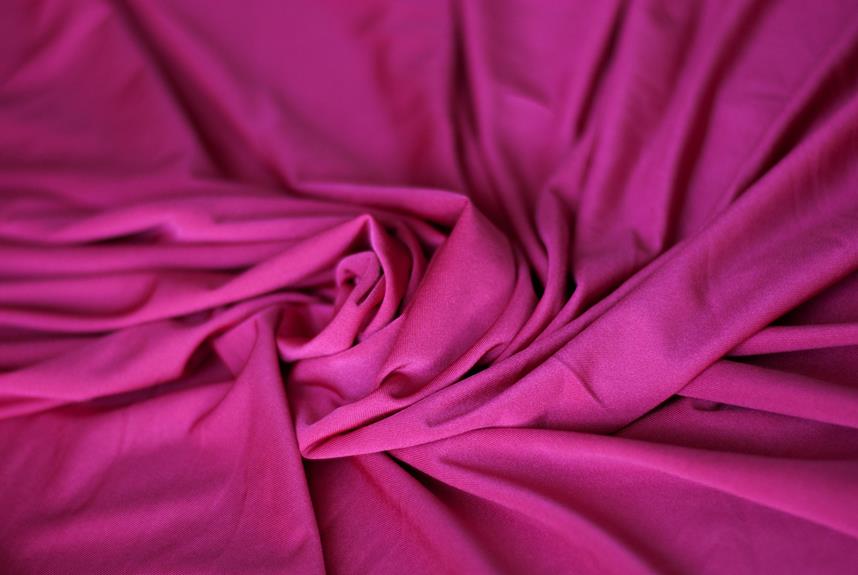When it comes to applying fabric starch, getting it right can make a significant difference in your finished project. You'll want to start with clean, slightly damp fabric and consider the right starch type for the weight of your material. Applying it properly is crucial; spraying from a distance ensures an even coat. But that's just the beginning—there's more to mastering this technique than meets the eye, especially when it comes to ironing and storage. Let's explore the finer points that can elevate your results to a new level.
Table of Contents
Key Takeaways
- Choose the appropriate starch type based on fabric weight; liquid starch for lightweight fabrics and spray starch for heavier ones.
- Ensure the fabric is clean and slightly damp before applying starch for better adherence and finish.
- Apply starch evenly from a distance of 6-8 inches, allowing 1-2 minutes before ironing for optimal results.
- Iron the fabric using the correct temperature setting for the fabric type, starting with collars and cuffs for thorough pressing.
Choosing the Right Starch
When choosing the right starch, consider the fabric type and the finish you want to achieve. Different fabrics respond uniquely to starch, so it's crucial to match the product to your material.
For lightweight fabrics like cotton and linen, you might prefer a liquid starch that provides a crisp finish without weighing them down. If you're working with heavier fabrics, like denim or canvas, a spray starch can offer more control and a firmer hold.
You'll also want to think about whether you're aiming for a light, medium, or heavy starching. Light starch works well for garments that require soft drapes, while medium to heavy starch is ideal for items like dress shirts or table linens that need to maintain their shape.
Additionally, consider whether you'd like a scented or unscented starch. Some starches add a pleasant aroma, while others keep it neutral, allowing your fabric's natural smell to shine through.
Preparing Your Fabric
Before applying starch, make sure your fabric is clean and properly laundered to achieve the best results.
Start by checking the care label for specific washing instructions. If the fabric is stained, treat the stains before washing. Use a suitable detergent and select the right water temperature. Generally, warm water works well for cottons and linens, while cold water is better for delicate fabrics.
Once your fabric is washed, dry it according to the care instructions. You can air dry or tumble dry, but avoid over-drying, as this can make the fabric stiff and hard to work with. If you're working with cotton or linen, slightly damp fabric is ideal for starch application. If your fabric's completely dry, you can use a spray bottle to lightly mist it with water.
For best results, iron your fabric before applying starch. This not only creates a smooth surface but also helps the starch adhere better.
Proper Application Techniques
To achieve the best results, apply the starch evenly across the fabric using a spray bottle or an iron-on starch method. Start by choosing a well-ventilated area to avoid inhaling any fumes. If you're using a spray bottle, hold it about 6-8 inches away from the fabric. Spray in a sweeping motion to ensure even coverage without over-saturating any one spot.
Here's a handy reference table to help you decide which method to use based on your fabric type:
| Fabric Type | Recommended Method |
|---|---|
| Cotton | Spray bottle |
| Linen | Iron-on starch |
| Synthetic blends | Light spray application |
| Delicate fabrics | Mist lightly |
| Heavyweight fabrics | Iron-on starch |
After application, allow the starch to set for a minute or two before proceeding with your ironing routine. This waiting period helps in achieving that crisp finish you're aiming for. Remember, the key to a professional look is consistency, so take your time and enjoy the process!
Ironing Tips for Starch
Ironing with starch enhances the fabric's crispness, so make sure your iron is set to the appropriate temperature for the fabric type. Different materials react differently to heat, so check the label for guidance.
Here are three essential tips for effective ironing with starch:
- Apply Starch Evenly: Before you start ironing, spray starch evenly on the fabric. Too much starch can lead to stiffness, while too little won't give you the crispness you want. A light, even coat is key.
- Iron in Sections: Work on one section of the fabric at a time. This allows you to focus on ensuring each area is well-pressed and starched. Start with collars and cuffs, then move to larger sections.
- Use a Pressing Cloth: If you're working with delicate fabrics, consider using a pressing cloth between the iron and the fabric. This protects your fabric from direct heat while still allowing you to achieve that crisp finish.
Storing Starch Properly
Proper storage of fabric starch ensures its effectiveness and longevity, so keep it in a cool, dry place away from direct sunlight. Exposure to heat and light can break down the starch, diminishing its performance when you need it most.
Make sure the cap is tightly sealed after each use to prevent moisture from getting in. If you notice any clumping or changes in texture, it's best to discard it, as this indicates that the starch is no longer usable.
Storing starch in its original container is ideal, but if you need to transfer it, use a clean, airtight container. Label the container with the date of purchase to keep track of its freshness.
Avoid keeping starch in high-humidity areas like bathrooms or near cooking appliances, as moisture can cause it to degrade. If you buy starch in bulk, consider dividing it into smaller portions to maintain freshness.
Troubleshooting Common Issues
When using fabric starch, you might run into a few common issues.
You can tackle these by adjusting your application techniques, tweaking the starch concentration, and following some handy ironing tips.
Let's explore how to fix these problems to achieve crisp, professional results.
Starch Application Techniques
To tackle common issues with fabric starch application, focus on adjusting your technique and product choice to achieve the desired results. Here are some tips to help you troubleshoot effectively:
- Use the Right Distance: When spraying starch, maintain a consistent distance of about 6-10 inches from the fabric. If you're too close, you might end up with stiff, sticky patches. Too far, and the starch won't set evenly.
- Control the Amount: Overapplication can lead to a crunchy texture. Start with a light mist and gradually build up if needed. It's easier to add more starch than to remove excess.
- Ironing Technique: If you notice streaks or residue after ironing, ensure your iron's heat setting matches the fabric type. Use a pressing cloth to protect delicate fabrics and achieve a smooth finish without burning or damaging them.
Adjusting Starch Concentration
Finding the right starch concentration can make a significant difference in achieving the perfect finish for your fabrics. If your starch solution is too weak, you'll notice that your fabrics lack crispness and might even look limp. On the flip side, an overly concentrated solution can leave a sticky residue, making your fabrics feel stiff and uncomfortable.
To help you adjust the starch concentration, consider the following table:
| Starch Concentration | Desired Effect | Common Issues |
|---|---|---|
| Light (1:10) | Soft finish | Lacks stiffness |
| Medium (1:5) | Balanced crispness | Good for most fabrics |
| Strong (1:3) | Extra crispness | May feel stiff and uncomfortable |
| Very Strong (1:2) | Tailored for heavy fabrics | Risk of sticky residue |
| Custom (Adjust as needed) | Personal preference | Trial and error might be required |
Experiment with these concentrations to find what works best for your specific fabrics. Remember, adjusting the concentration can significantly enhance the look and feel of your finished items.
Ironing Tips and Tricks
Ironing can sometimes lead to frustrating issues, but knowing a few tips and tricks can make the process smoother and more effective. Here are some common problems you might encounter and how to tackle them:
- Sticking Fabric: If your fabric starts to stick to the iron, it may be due to residue from starch or other products. To fix this, clean the soleplate with a damp cloth or a dedicated iron cleaner. Make sure to let the iron cool down before doing this.
- Wrinkles Not Lifting: If wrinkles remain stubborn, you mightn't be using enough steam. Ensure your iron is set to the steam setting, and consider using distilled water to prevent mineral buildup. Alternatively, try lightly misting the fabric with water before ironing.
- Shiny Spots: If you notice shiny areas on your fabric, it's likely due to overheating. Adjust your iron's temperature setting to match the fabric type, and always test on a hidden area first to avoid damage.
Implementing these tips will help you achieve crisp, wrinkle-free results every time you iron.
Alternatives to Fabric Starch
If you're looking for alternatives to traditional fabric starch, you've got some great options.
Cornstarch can work wonders, while vinegar adds an extra crispness to your fabrics.
Plus, there are several commercial spray starch products that can help you achieve the same results with ease.
Cornstarch as Starch Alternative
Cornstarch serves as an effective and natural alternative to commercial fabric starch, providing similar crispness without harsh chemicals.
Using cornstarch is simple and can save you money while keeping your fabrics fresh and well-pressed.
To use cornstarch for starching your fabrics, follow these steps:
- Mixing: Combine one tablespoon of cornstarch with two cups of water in a spray bottle. Shake well until the cornstarch is fully dissolved.
- Application: Lightly mist the fabric with the cornstarch solution, keeping the spray bottle about 6-8 inches away. Be careful not to oversaturate the fabric; a light coating is all you need.
- Ironing: Once you've misted the fabric, use your iron to press it. The heat will activate the cornstarch, providing that desired crispness while ensuring your fabric looks neat and polished.
Vinegar for Crispness Boost
Vinegar can serve as an excellent alternative to commercial fabric starch, adding crispness and freshness to your linens without the use of harsh chemicals. You can easily make your own vinegar solution by mixing one part white vinegar with three parts water in a spray bottle. This mixture not only helps to stiffen fabric but also cuts through odors, leaving your items smelling clean.
When you're ready to apply, lightly mist the vinegar solution onto your fabric while it's laid flat. Be careful not to soak it; just a light coating will do. After misting, use an iron on the appropriate setting for your fabric type, gliding it over the surface to activate the vinegar's crisping properties.
Vinegar is particularly effective on cotton and linen, giving them that desired crisp look without the buildup associated with commercial starches. Plus, it's a cost-effective choice that's readily available in most kitchens.
If you're looking for an eco-friendly and straightforward alternative to traditional fabric starch, give vinegar a try—you might be pleasantly surprised by the results!
Commercial Spray Starch Options
Explore a variety of commercial spray starch options that can help you achieve that fresh, crisp finish on your fabrics with minimal effort. These products not only simplify the starching process but also offer a range of benefits like added scent and easy application.
Here are three popular options to consider:
- Niagara Original Spray Starch: This classic choice provides a strong hold while resisting wrinkles. It's perfect for shirts and linens, giving them a professional finish.
- Faultless Premium Starch: Known for its heavy-duty formula, this starch offers excellent stiffness and is great for crafting projects or sewing. Its no-clump formula ensures a smooth application every time.
- Mary Ellen's Best Press: If you're looking for something a little different, this starch alternative is a favorite among quilters. It's a clear-starch spray that leaves a crisp finish without any buildup, and it comes in various delightful scents.
Frequently Asked Questions
Can Fabric Starch Be Used on Delicate Fabrics Like Silk?
You should avoid using fabric starch on delicate fabrics like silk. It can damage the fibers and alter the fabric's natural drape. Instead, consider alternatives specifically designed for delicate materials to maintain their beauty.
How Often Should I Starch My Clothes?
You should starch your clothes whenever they need a crisp finish. For regular items, aim for every wash. For special occasions, consider starching just before wearing to maintain that fresh, polished look.
Is Fabric Starch Safe for Children's Clothing?
Yes, fabric starch is generally safe for children's clothing when used properly. However, you should always check for allergies and choose non-toxic starch products to ensure your child's safety and comfort while wearing starched clothes.
Can I Mix Different Brands of Fabric Starch?
You can mix different brands of fabric starch, but it's wise to test a small area first. Each brand may have unique formulations that could affect the final results or fabric texture.
Does Fabric Starch Expire or Lose Effectiveness Over Time?
Yes, fabric starch can expire or lose effectiveness over time, especially if it's not stored properly. Always check the label for expiration dates and consider replacing it if you've had it for an extended period.
- A Profile of Epyllion Fabrics Ltd: A Leader in Bangladeshi Textiles - June 21, 2025
- Price Analysis of Non-Woven Fabric Bags in Bangladesh - June 21, 2025
- Exploring the Market for Organic Cotton Fabric in Bangladesh - June 21, 2025






